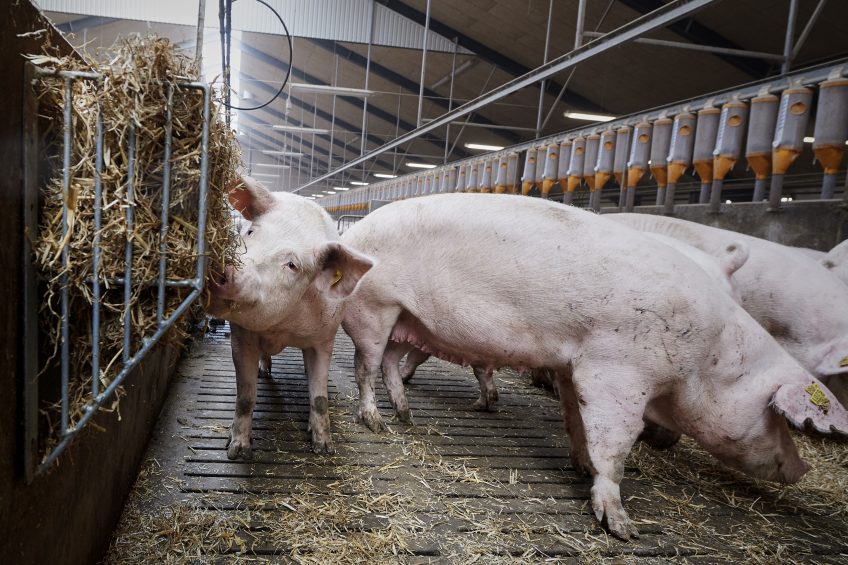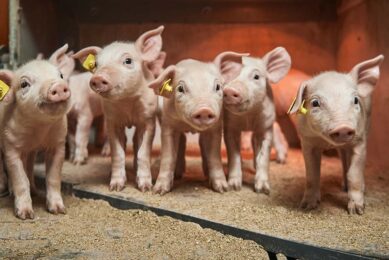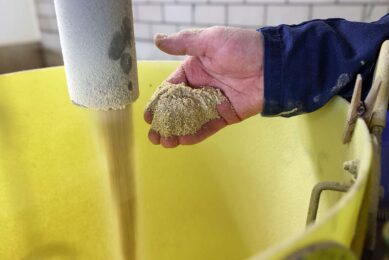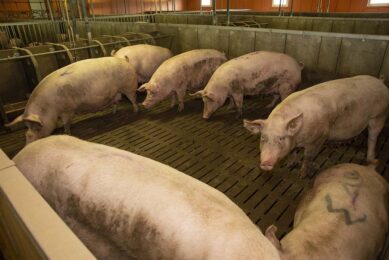How can you better manage a gestation unit?

How to make sure that all aspects of breeding are performed at an optimal level. Danish breeding company DanBred composed a 6-chapter manual in which every aspect, from quarantine to post-farrowing is described in detail. To give an idea, Pig Progress presents 1 chapter of the manual: gestation management.
During gestation it is important that the sows’ nutrient requirements for foetus production, restoration of body condition and udder growth are met through balanced feeding. The goal is to make sure the sows achieve an optimum body condition, so they are in good shape for farrowing and the nursing period that follows. And to achieve this, it may be necessary to adjust individual feed rations for sows which are either too thin or too fat.
5 days after mating, the implantation period starts. Lasting between 3 and 4 weeks, this is when the fertilised eggs form the placenta and it has an enormous impact on the litter size. Because of this, sows and gilts should not be moved around, re-grouped or be exposed to anything that could be stressful during the first 4 weeks after mating, as this could result in smaller litters.
It is a good idea to put sows and gilts into a vaccination programme, made in collaboration with the herd veterinarian, to reduce the risk of reproductive diseases spreading through the herd.
Everyday tasks in the gestation unit include:
- The inspection of all animals at least once a day to check for any signs of disease;
- Between 4 and 6 weeks after mating, all sows and gilts should be tested for pregnancy.
Figure 1 – Scaling of sows.

Gestation control
Regular testing of all mated animals for pregnancy presents an insight into the overall fertility of the herd. And because of that, it is possible to quickly identify empty sows which can be mated again, or culled, regular pregnancy testing will reduce the overall number of non-productive days.
It is a good idea to heat control the sows with a teaser boar every day from day 19 to day 28 after mating. Some sows experience a prolonged return interval, so it is important to do heat control for a few more days. It is best to carry out heat control during a quiet time of the day using an experienced and active boar – and if possible, using different boars.
Pregnancy control, carried out with an ultrasound scanner, will have to start on day 28 until day 42. It is vital to make sure every single sow is scanned.
When there is any doubt about the result of a scan, it is a good idea to mark the sow, in order to scan her again within a week. Should the sow remain empty, the animal has to be marked and moved to the mating unit – or be prepared for culling.
Pregnancy control is an important part of the herd operation – and so are due care and proper registration of the results. It is the best way of finding and eliminating the cause of mistakes and hidden diseases.
Figure 2 – Feed curves for sows during gestation.

The vaccination programme
The vaccination strategy (see Table 1) is a guideline based on a Danish setup. It is vital to always work on the vaccination strategy with the expert guidance of the herd veterinarian.
Feeding from mating until farrowing
During gestation, it is important to meet the sows’ nutrient requirements for foetus production and udder growth through balanced feeding. It is crucial to restore body condition after weight loss from the farrowing unit because a negative energy balance increases the risk of abortion. It is recommended to add raw ingredients rich in fibre to the gestation feed.
There are basic principles for feeding in the gestation unit:
- Sows which have lost a lot of weight during the previous nursing period will consume more feed. It is advisable to restore good body condition within the first 4 to 5 weeks after mating.
- It is not recommended is to feed gilts ad libitum for the first 4 weeks after mating. Studies have shown that high weight gain during the first part of gestation increases the risk of abortion among gilts. So, it is better to feed small gilts around 2.2kg per day and heavy gilts around 2.4kg per day.
- The environment (temperature, draught and humidity) can have a big influence on feed consumption.
- To reach an optimum weight at farrowing, it is essential to focus on feeding during the 4 weeks before farrowing.
Feeding method
It is recommended that gestating sows are fed according to their individual needs. Group feeding the sows places a big demand on herd managers, so if group feeding is the only option, it is vital that they focus on:
- Making sow groups according to body condition;
- Penning thin sows individually;
- Ensuring body condition remains homogeneous among the sows in each group.
Body condition score
It is important to focus on body condition around farrowing. Group the sows according to their body condition. Different methods can be used for the evaluation of body condition:
- Visual evaluation – simply by looking at each sow;
- Palpation – using hands to check the body;
- Measurement of the back-fat thickness.
It is recommended to always use a combination of these methods when assessing body condition, and never to rely on visual evaluation alone.

A vital element is to carry out body condition evaluation before mating, at pregnancy control, after 70 days of gestation and just before farrowing. The evaluation of body condition before mating will help choose the right feeding curve for each sow during gestation. Subsequent body condition evaluations at pregnancy tests and on day 70 of gestation will indicate whether the sow’s feeding curve is correct or whether some adjustments need to be made.
The body condition evaluation at farrowing helps to work out whether the chosen feeding strategy for each sow during gestation was correct. At the time of farrowing, ideally as many sows as possible should have an average body condition with a back-fat thickness of 16-19 mm.
5 more chapters of the Gilt Manual can be found at http://manual.danbred.com/
Co-authors: Sigrid Beth Rasmussen & Trine Lund Pedersen, DanBred Technical Services team
 Beheer
Beheer









 WP Admin
WP Admin  Bewerk bericht
Bewerk bericht